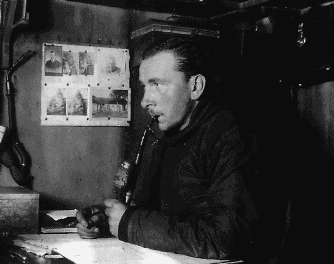



Online databases require a login from off-campus!

Username - same as your ACES username
Password - same as your Banner ID
What's your Banner ID? - Log in to ACES, click Student Tab, click Banner ID Lookup Tool
Click on Articles & Reference to search for magazine, journal, newspaper articles, reference, and more. The following databases may be helpful for your assignment.
Full text articles may be emailed to your address, downloaded, or printed.
California Gov. Jerry Brown (D) on Wednesday announced that for the first time in history, a state-wide set of water restrictions would be imposed in order to cope with a record drought, a move that includes an order to cut water use in all cities and towns by 25 percent.
Brown’s order calls for other drastic changes, such as replacing 50 million of square feet of lawn in the state with “drought tolerant landscaping,” and creating a rebate program to get people to replace their older appliances with newer and more water-efficient appliances.
The order also calls on golf courses, cemeteries, college campuses and others with “large landscapes” to reduce water usage. Brown said these and other changes are needed to cope with record drought in California, which is due in large part from the lowest snowpack ever seen in the state.
“Today we are standing on dry grass where there should be five feet of snow,” Brown said. “This historic drought demands unprecedented action. Therefore, I’m issuing an executive order mandating substantial water reductions across our state. As Californians, we must pull together and save water in every way possible.”
Brown said California has already been coping with the drought for more than two years, and noted that a state of emergency was declared in 2014.

| Excellent (5 pts) | Good (3 pts) | Needs Improvement (1pt) |
| Complete citation given, keyword(s) stated, citation item was located in databases listed. | Complete citation given, no keyword(s) stated, citation item was located in databases listed. | Partial citation given, no keyword(s) stated, citation item cannot be identified as coming from any of the databases listed. |
By January 1912 Wegener had developed a theory to explain continental similarities. Such similarities cannot be explained by sunken land bridges, he said, but are the result of continents having moved slowly across the face of the planet. Three more years of research were needed before Wegener's theory was completed. In 1915 he published The Origins of Continents and Oceans, summarizing his ideas about continental similarities.
According to Wegener's theory, the continents were once part of one large land mass, which he called Pangaea. Eventually this land mass broke into two parts, two super-continents, which he called Gondwanaland and Laurasia. Over millions of years, Gondwanaland broke apart into South America, Africa, India, Australia, and Antarctica, he suggested, whereas Laurasia separated into North America and Eurasia.
The basic problem Wegener faced was to explain how huge land masses like continents can flow. His answer was that the materials of which the earth's crust is made are of two very different types. One, then called "sial," is relatively light, but strong. The other, then called "sima," can be compared to very thick tar. Continents are made of sial, he said, and sea floors of sima. The differences in these materials allows continents to "ride" very slowly across sea floors.
Wegener's theory was met with both rejection and hostility. Fellow scientists not only disagreed with his ideas, but also attacked him personally even for suggesting the ideas. The theory of continental drift did not totally disappear as a result of these attitudes, but it fell into disfavor for more than three decades.
Research dating to the mid-1930s revealed new features of the sea floor that made Wegener's theory more plausible. Scientists found sections of the ocean bottoms through which flows of hot lava were escaping from the mantle, somewhat like underwater volcanoes. These discoveries provided a crucial clue in the development of plate tectonics, the modern theory of continental drift.
According to the theory of plate tectonics, the upper layer of the earth is made of a number of plates, large sections of crust, and the upper mantle. Seven major plates have been identified, with numerous smaller plates. The largest plate is the Pacific Plate, underlying the Pacific Ocean. The North and South American, Eurasian, African, Antarctic, and Indo-Australian are the other major plates. Examples of secondary plates are the Arabian, Caribbean, Cocos, and Nazca plates.
"Plate tectonics." Environmental Encyclopedia. Gale, 2011. Gale Biography In Context. Web. 6 Feb. 2013.